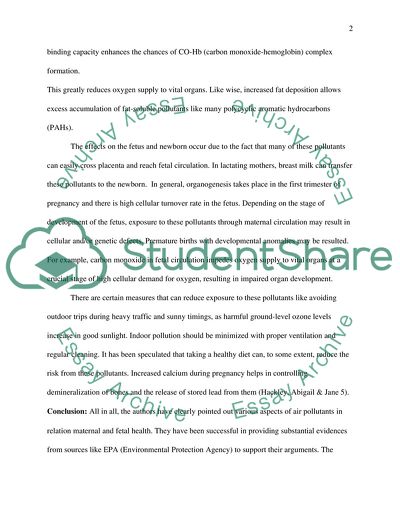Impact on Maternal and Perinatal Health Article Example | Topics and Well Written Essays - 500 words - 2. https://studentshare.org/medical-science/1709696-impact-of-air-pollutants-on-maternal-and-perinatal-health
Impact on Maternal and Perinatal Health Article Example | Topics and Well Written Essays - 500 Words - 2. https://studentshare.org/medical-science/1709696-impact-of-air-pollutants-on-maternal-and-perinatal-health.


